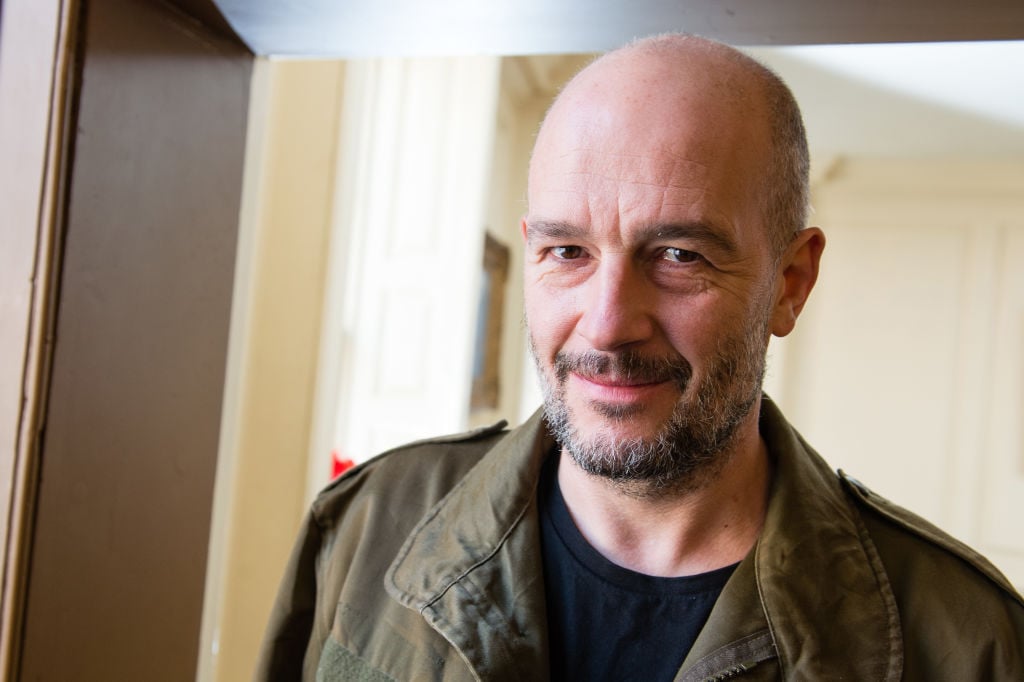
“Art has become flatpack Ikea,” Jake Chapman concluded at the end of a public talk last week at the Zabludowicz Collection’s exhibition space in London, a former Methodist chapel built in the nineteenth century.
Chapman was discussing his and brother Dinos’s oeuvre with Antonia Blocker, the Collection’s curator of public programs, as part of the sixth iteration of “Master Class,” an art education initiative coinciding this year with the 10th anniversary of Zabludowicz’s “Testing Ground” program, which gives local art students—this year from Central Saint Martins—free reign over an exhibition at the Collection.
Maitreyi Maheshwari, Zabludowicz’s director of programming, told artnet News that regularly collaborating with students helps the Collection to “continue to learn and engage with the most pressing discourses in curatorial practice.”
Conceived by the artist Doug Fishbone, “Master Class” was launched in 2013, and offers a week-long intensive course to selected UK-based emerging artists, which is structured around closed teaching days and free public lectures with internationally acclaimed artists. Participating alongside Chapman this year were Richard Wentworth, Michael Dean, and Ericka Beckman.
Richard Wentworth. Image courtesy of Cutler and Gross.
For his talk, Chapman took the audience back to his own student days at the Royal College of Art in the 1980s, during what he called “the seething rise of what would become the YBAs at Goldsmiths.”
The ’80s saw an instrumental shift in the landscape of British art, as young artists began to re-examine critical texts from the 1960s to support a new, deeply pessimistic art. That said, Chapman reckoned the YBAs to be an “elitist, hyper-bourgeois seven” who presented their work as though it was connected to these writers but, in Chapman’s experience, they were actually “fucking idiots.”
Nevertheless, the sensation attached to the YBAs laid the path for contemporary art to be brought into the mainstream. Skip forward to 2018, and “Art has now been pulled into the center because it embodies a demographic expression of liberal tolerance and cultural connection,” Chapman said. “The more shitty, nasty, transgressive the art is, the more it kind of defines the centrifugal tolerance of a liberal society. So there’s no crackdown on transgressive art, there’s encouragement of it.”
The eight young artists sitting in the front row of the public lecture were Chloe Ashley, Corey Bartle-Sanderson, Sam Blackwood, Eleanor Duffin, Bob Gelsthorpe, Clinton Kirkpatrick, Penelope Koliopoulou, and Suzi Osborn. Selected from a national open call, they were looking forward to their closed session with Chapman the following day.
Richard Wentworth, who had been in Chapman’s seat the night before, told artnet News his thoughts on the program. “To find a dozen focused energies in one place at one time, with the right levels of generosity and curiosity is rare,” he said. “To be spared the bad smells of procedural fakings, the badge wearing, the status posturing, and all the feignings and nonsenses (the institutional habitudes of the Isle of Brexit) was a delight, a productive pleasure all of its own—a creative battery factory—think Tesla in his workshop.”
The Zabludowicz Collection is located at 176 Prince of Wales Road, London.